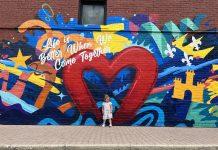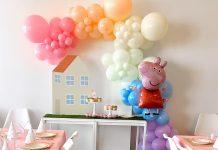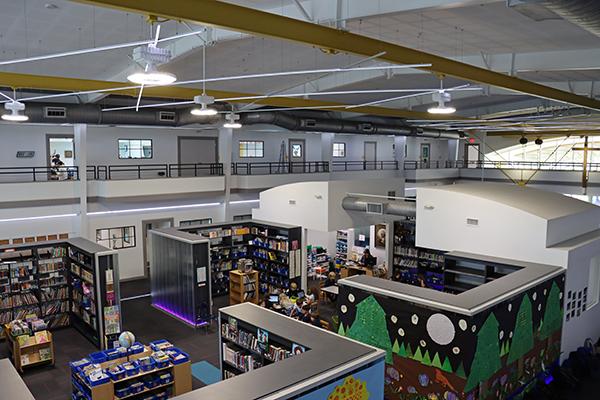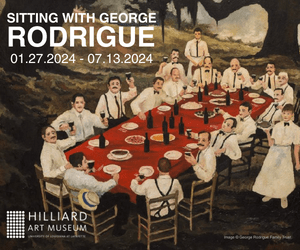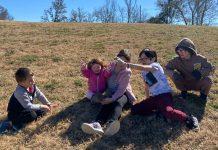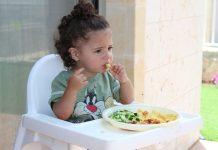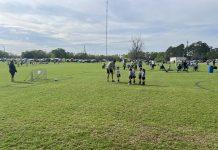Disclosure :: This post is sponsored by ESA.
The Most Innovative Educational Space in Acadiana
Five years ago, the Episcopal School of Acadiana built the most innovative educational space in Acadiana on its Lower School campus. The intent was to provide purpose-built classrooms for those courses that require lots of space and specialized equipment: a fully-equipped science lab, visual and performing arts studios, an expansive library, and more. It all looked amazing on paper, but the reality of operating within the space has surpassed our expectations. It has expanded our curriculum and stretched our understanding of responsive, forward-thinking teaching. This year’s PK3 students will be graduating from college in 2042. That’s the horizon we hold in our peripheral vision when we bring children into the Enrichment Center.
Visitors to the Enrichment Center all respond the same way when they enter the building for the first time. Their eyes shoot up to the 25-foot-ceiling; their heads tilt back and around as they scan the mezzanine that wraps around three sides of the space, with its industrial-modern steel and cable railing; they spot the pulleys and beams – retained from the days when the building was a boat-building facility – and realize instantly that this is not a typical elementary school. Most say it looks like a space where designers, engineers or scientists might work. The aesthetics of the building convey the message that ESA values and respects the work of children, and the children themselves recognize that. They enter the space with reverence, but also vibrating with excitement to get back to work in a lab or a studio where their ideas and questions are integral parts of the lessons and projects they will experience.
ESA keeps the promise in its mission statement to challenge students to develop intellectually, physically, and spiritually. Challenge does not come without failure. Doing hard things requires trying, failing, and trying again.
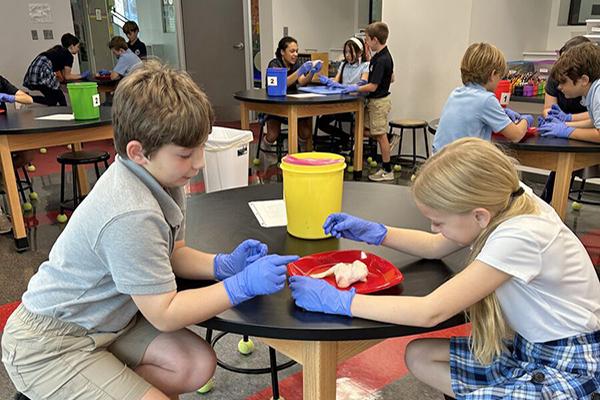 Embracing challenge and accepting failure happen every day, in every space in the Enrichment Center. Along with exploring art, music, French, and science, students strengthen their creativity, critical thinking, problem-solving, and grit through a design-thinking curriculum that encourages them to turn their ideas into tangible prototypes and products. Through these “specials” classes, students develop habits of mind that they apply to a challenging logic problem in math class, a daunting literary analysis essay in language arts, or a strong desire to help others in a service learning project.
Embracing challenge and accepting failure happen every day, in every space in the Enrichment Center. Along with exploring art, music, French, and science, students strengthen their creativity, critical thinking, problem-solving, and grit through a design-thinking curriculum that encourages them to turn their ideas into tangible prototypes and products. Through these “specials” classes, students develop habits of mind that they apply to a challenging logic problem in math class, a daunting literary analysis essay in language arts, or a strong desire to help others in a service learning project.
Projects within the Enrichment Center not only inspire students to go beyond what most adults would gauge them to be capable of, they also connect students to the outside world and give them authentic reasons for engaging with the content we’re teaching them. Five years of examples have taught us that if you make a space for children that looks like, and functions like, a space for professionals, children will astonish you with what they can do. Here’s just one example:
Knowing that PK4 students do an in-depth study of the human body every year, fifth-grade science students applied knowledge gained in their own study of the digestive system to create an immersive experience to solidify the PK students’ understanding. The little ones walked through a giant mouth into the esophagus (the elevator, lined with undulating strips of pink crepe paper to simulate the waves of muscular contractions that help food move into the stomach). When the elevator doors opened, they entered the stomach, where they encountered chyme and gurgling noises, continued on to the intestinal tract (the stairwell) and exited the digestive system (aptly) through the back door of the Enrichment Center.
It turns out our visitors’ first impressions are accurate. The Enrichment Center is a place where designers, engineers, and scientists work. Ours just happen to be between the ages of 3 and 12.


